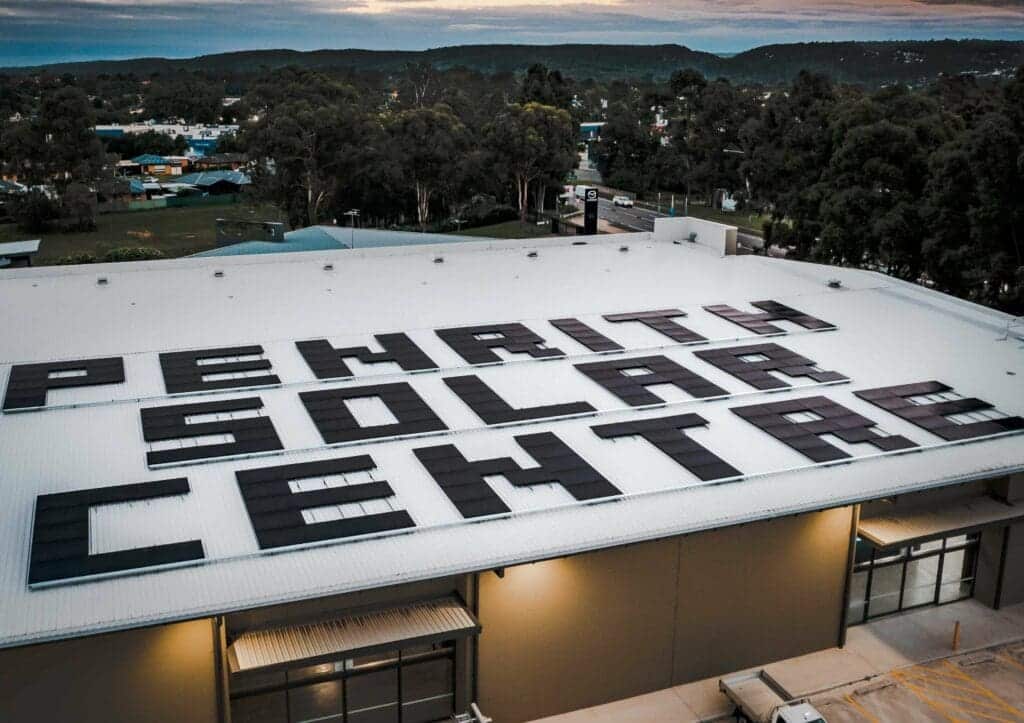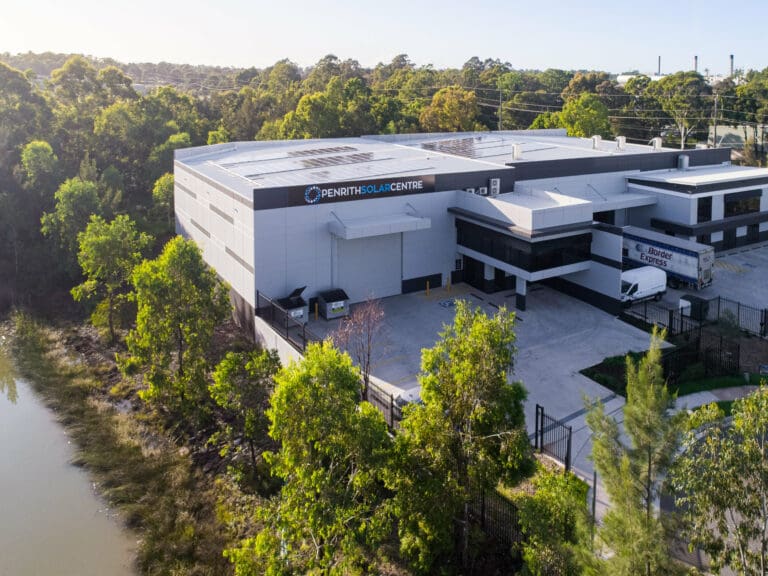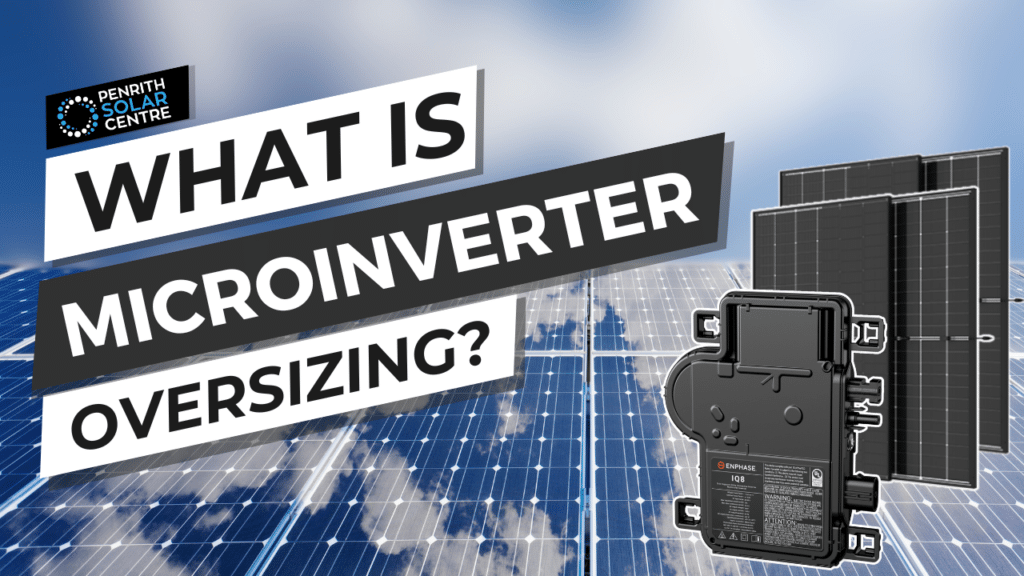
When shopping for solar systems, what happens when you see something that doesn’t add up?
In the case of power output from solar panels stacked up against the conversion power of microinverters, you’ll see that their power ratings don’t match. At all. Why would you install microinverters with a lower power rating than a solar panel? Is it a mistake? The math does not match up. And because you’re a smart solar shopper, you’ve gotten pretty good at solar system math.
At Penrith Solar Centre, we’re here to educate you through every step of your solar journey. When it comes to the performance of a microinverter with a solar panel, we’re experts because we exclusively install microinverters. Our team understands this issue inside and out, and we’re here to educate you so the solar math you encounter will be a little easier.
In this article, you will learn:
- What is Solar “Oversizing” in a Microinverter System?
- Why Would You Want to Oversize a Microinverter Solar System?
- AC to DC Ratio
- Solar Panels vs Microinverters: Final Thoughts
By the end of this article, you’ll be an expert in all things related to oversizing with a microinverter solar system. Let’s dive in!
What is Solar “Oversizing” in a Microinverter System?
The microinverter is a key component of a solar system. Each solar panel has a microinverter mounted beneath it.
The solar panel converts the sunlight into DC (direct current) power. This is measured in watts.
The microinverter converts the DC power into AC power, and this is also measured in watts.
It’s common for the solar panel power rating (measured in watts) to exceed that of the microinverter. This is what is meant by oversizing.
Why Would You Want to Oversize a Microinverter Solar System?
At Penrith Solar Centre, we install Enphase IQ8HC Microinverters that have a peak power output rating of 384W (that’s the maximum amount of DC power it can convert to AC power), and Trina Vertex S+ solar panels with a maximum power output of 440W (this collects the DC power that’s fed to the microinverter for conversion to AC power).
- Microinverters = 384W
- Solar Panels = 440W
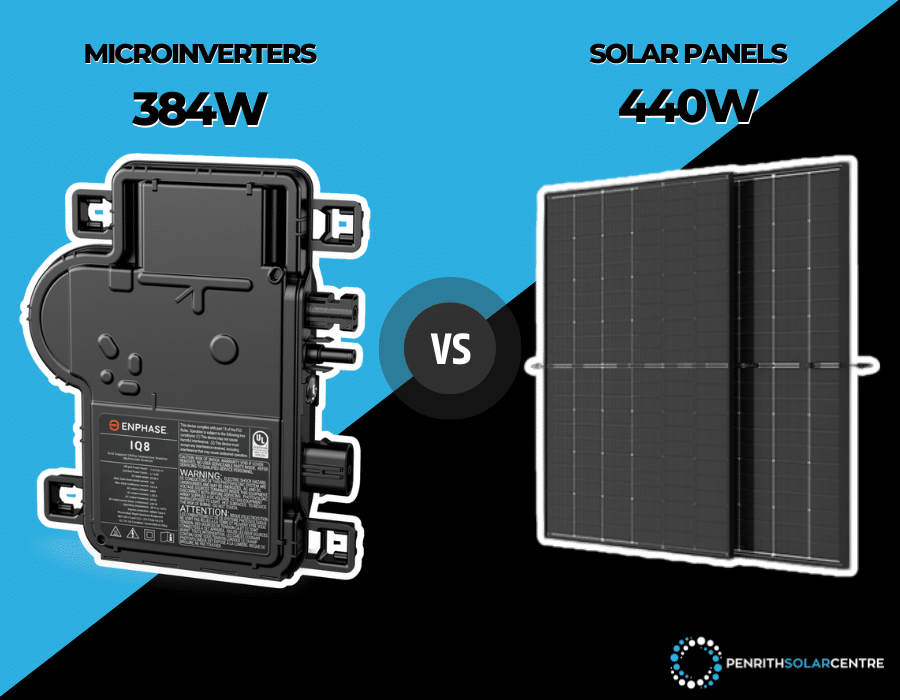
Why does this discrepancy exist?
Imagine you’re picking out pyjamas – you wouldn’t just choose the size that fits you exactly; you would go a little bigger to make sure they’re comfy. Solar panels and microinverters are a similar strategy.
Solar Panel Efficiency
Panels never achieve 100% efficiency; there’s always an element of losses. Under ideal conditions, like standard testing conditions when they receive their wattage rating, they perform at their peak efficiency. What are standard testing conditions?
When solar panels are tested in a lab, they perform at their very best. The manufacturer performs a “flash test.” A flash test for solar panels is a procedure that’s used to determine the performance of a solar panel. The test involves applying a high-intensity flash of light to the solar panel and measuring the response in terms of voltage and current.
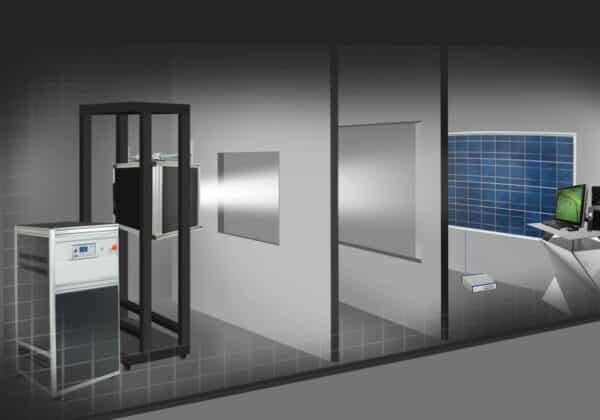
Manufacturers come up with an optimal power rating for a solar panel based on the results of the flash test. This would be maximum irradiation from the sun at a perfectly perpendicular angle (90° to the solar panel’s axis). The panel then gets badged with a rating and goes out into the world.
Your solar panels will output less power than what they’re rated for in the lab because the manufacturer tests the solar panels in ideal conditions.
But solar panels operate in all sorts of conditions. Solar panel efficiency is largely determined by tilt and orientation, but it’s also affected by temperature, shading, lengths of wiring between components, and other loss conditions. A cloudy day can knock out the efficiency of your panels, preventing it from achieving optimal conditions.
If you’re interested in learning a bit more about solar panels, specifically the solar panels we install, you might want to check out the following article titled, Why We Install Trina Vertex S+ Solar Panels.
Microinverter Efficiency
Let’s talk about the microinverter: microinverters get tested as rigorously as solar panels, but they’re less subject to environmental conditions. They are durable little guys that are mounted underneath each solar panel, protected from the elements (kind of).
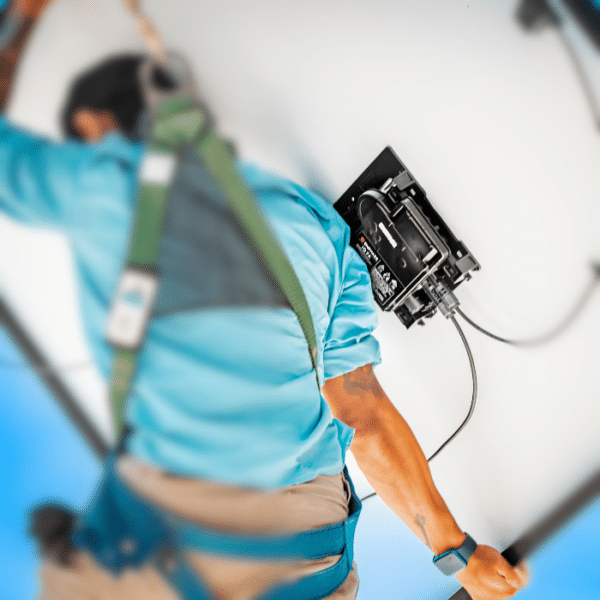
Their performance doesn’t drop over time (like solar panels do). They are affected by heat, but the temperature has to get a really hot before this becomes an issue. Most of the time, the microinverter’s performance won’t be any less than what is specified by the efficiency rating, which is usually well above 95%.
Microinverters perform better when they’re operating in their peak power range.
If the power harvested by the panels and output to the microinverter is converted. This is the task of the microinverter; converting DC power into AC power that can be used in the home. As long as that power sent to the microinverter from the solar panels is within its operating range (less than 384W), the microinverter should be able to convert all that electricity and send it along its merry way down to the home.
To keep the microinverter operating at peak capacity, it needs to draw as much power as possible from the solar panel. And because the solar panel doesn’t always operate at peak capacity, and because that microinverter is hungry for 384W of DC power to convert into AC power, you end up installing a larger capacity solar panel than the capacity of the microinverter.
You oversize the system because you want to keep the microinverter operating at peak or near peak capacity.
If you’re interested in learning more about microinverters, please feel free to check out the following article titled, Microinverters vs. String Inverters: An Honest Comparison.
AC to DC Ratio
In Australia, according to the Clean Energy Council, solar installers are only allowed to oversize a panel by 33% in relation to the capacity of the microinverter.
If you were to install an Enphase IQ8HC microinverter with a nominal wattage of 384W, 33% oversizing would mean that the biggest panel you can install on that microinverter is 510W. Of course, as mentioned above, we install a Trina Vertex S+ which has a maximum output of 440W
510W is 33% larger than 384W, and the Trina panels are 440W which is well within the range of 33%.
If you’re looking at quotes and chatting with salespeople in New South Wales, you’ll probably notice that there are string inverter systems that are 6.6kW in panels with a 5kW string inverter. As Australian’s energy needs are increasing, the standard string inverter system that’s seen now is actually 13.3kW of panels with a 10kW string inverter.
These are perfectly oversized within 33%. This “fills up” the inverters (respectively) with the most power it can convert.
With an Enphase microinverter system from Penrith Solar Centre, we’re installing a 440W panel with a 384W microinverter. This microinverter may not reach its peak output until midday. By oversizing the panel, it also makes the microinverter more efficient earlier in the day and later into the afternoon.
Now, we know what you’re thinking: the panels can’t possibly reach full capacity. You’re right. It only happens at certain times of year and day. The panel will mostly likely produce at full capacity (in Australia) on the months on either side of Christmas during the summertime. And even then, only between 10AM and 2PM. The sun is at its zenith and those panels are achieving maximum irradiation. When the sun is low in the west, the panels on the east don’t receive the same amount sunshine.
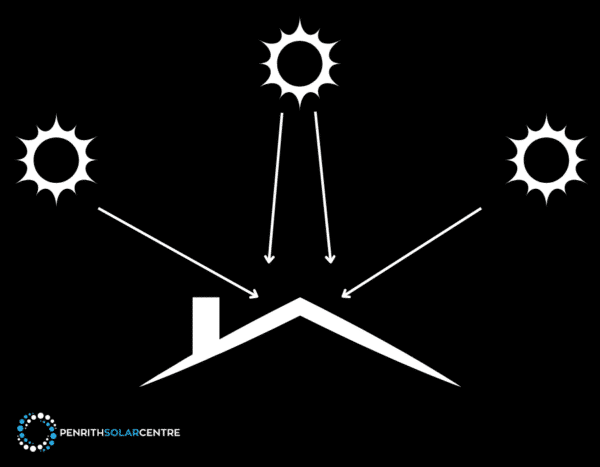
If a solar panel is producing more power than the microinverter can convert from DC to AC power, it’s called “clipping.”
It’s easy to get annoyed with this when you first find out about it because it sounds like there is wasted energy getting lost somewhere in the solar system. When you use terms like “oversizing” and “clipping,” it sounds like you made a mistake.
It’s not a mistake, it happens roughly when the panels are producing at peak efficiency four months out of the year between 10am and 2pm. Here’s a handy graphic to illustrate the point:
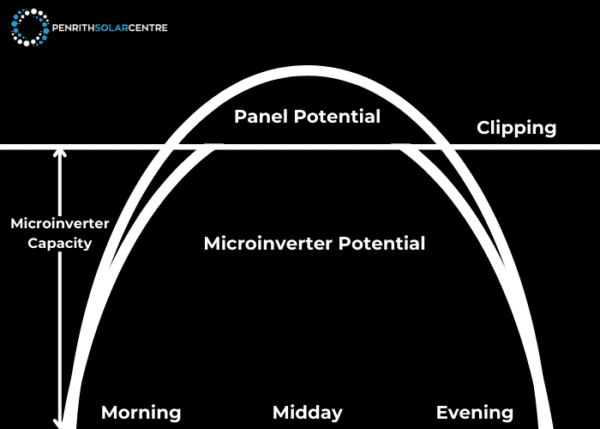
For more information about clipping, you might want to check out the following article titled, What is Solar Clipping?
One of the reasons folks oversize their panels is for the STCs, commonly known as the government rebate. The STCs are awarded to a solar system based on the number of kilowatts the panels produce, not the inverter capacity. If you have a 5kW inverter and 6.6kW of panels on the roof, the rebate is calculated by the 6.6kW of panels on the roof.
At this moment in time, in Australia, the cost of the panels alone is covered by the government rebate. It’s proportional to the number of panels installed in the system.
If you’re interested in learning more about STCs and the government rebate, you might want to check out the following article titled, How Does the Solar Rebate Work?
Solar Panels vs Microinverters: Final Thoughts
Now that you understand what oversizing is, you’ll be better equipped to understand why the power output of your panels is different in relation to your microinverters.
Oversizing your system gives your microinverters the ability to maximise their efficiency and help your system reach its full potential.
At Penrith Solar Centre, we work with you to figure out how weather or season or even time of day can affect the efficiency of your solar panels in relation to your microinverters.
For more information on the on the ins and outs of solar microinverters, you might want to check out the following article titled, Myths & Misconceptions About Solar Microinverters.
